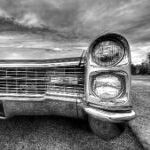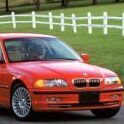I need to get something out of the way before diving into the review of the 2018 Toyota C-HR. Originally the C-HR was to join Scion’s lineup, but the C-HR would become a Toyota as the Scion brand would shut its doors in late 2016. With this change of brands, does this leave the C-HR with an identity crisis?
The C-HR is short for ‘Coupe High Roof’ and the design makes that very clear. Proportions are very similar to a coupe with a long front and stubby back. Other coupe details to be aware of are a set of wider fenders, a sloping roofline, and a rear spoiler. It makes for a very polarizing design that many will agree catches your eye for better or worse
Toyota’s designers must have been infatuated with diamonds as you’ll notice this shape throughout the C-HR. Key examples include the pattern on the cloth seats and arrangement of buttons on the steering wheel. The center stack is slightly angled towards the driver to emphasize a sporty nature. Material quality is about average with a mix of soft-touch plastics on the dash, and hard plastics for the door panels and center console. The C-HR’s ergonomics are excellent as controls are laid out logically and easy to use.
I found the front seats are lacking in lower-body support. I’m 5’9” and after driving the C-HR for an hour, I found my thighs and legs started to ache. This comes down to a short bottom cushion. Shorter drivers will likely not run into this issue. ‘Claustrophobic’ is the word to describe the C-HR’s back seat as the small rear windows make it feel small. Not helping is the limited amount of legroom as I found my knees touching the backside of the front seat. CH-R’s cargo space is in the middle of the class when the rear seats are up at 19 cubic feet. To give some perspective, the Mazda CX-3 is the smallest at 12.4 cubic feet, while the Honda HR-V has the largest at 24.3. Fold the rear seats and the C-HR is at the bottom of the class with 36.4 cubic feet. The Mazda CX-3 has 9.1 cubic feet more space when its rear seats are folded.
All C-HRs come equipped with a 7-inch touchscreen radio with the basics; AM/FM, Bluetooth, and inputs for USB and aux cords. While I found the system to be intuitive to use with a simple menu structure and decent performance, I did find myself wishing Toyota had included Apple CarPlay and Android Auto or the option of a larger system with navigation.
Powering the C-HR is a 2.0L four-cylinder with 144 horsepower and 139 pound-feet of torque. This is paired with a CVT and front-wheel drive. All-wheel drive is nowhere to be found despite the C-HR offering it in markets outside the U.S. Driving in town, the C-HR feels lively thanks to a responsive throttle. But above these speeds, the C-HR reveals a major weakness; put your foot down and the engine takes its sweet time to get up to speed - taking over 11 seconds to hit 60 mph. This makes certain tasks such as passing a slower vehicle treacherous. Under hard acceleration, the CVT is quite loud. Toyota does offer other engines for the C-HR elsewhere, including a hybrid. Reading through various test drives, the hybrid is slightly quicker; recording a 0-60 time of 11 seconds.
Fuel economy figures for the 2018 C-HR are 27 City/31 Highway/29 Combined. My average for the week landed at 28.1 mpg.
Like most new and redesigned Toyota models, the C-HR rides on the modular TGNA platform. I have praised this platform on both the Prius and Prius Prime as it makes them feel playful on a winding road. This extends to the C-HR. Despite a higher ride height, body motions are kept in check when cornering. Steering feels precise and has ample weight when turning. Ride quality is on the firm side, but it will not beat up passengers. A fair amount of tire and wind noise comes inside when driving on the expressway.
The Toyota C-HR is quite expensive for a subcompact crossovers. The base XLE begins at $22,500. My XLE Premium tester begins at $24,350 and with some added accessories, the final price was $25,633. That’s without leather seats, navigation, or a sunroof. Toyota is quick to point out that the C-HR does come equipped with a number of active safety features such as adaptive cruise control and lane keep assist as standard. That only helps the base XLE when it comes to arguing value. The XLE Premium has a tougher time since you can get into a well equipped Hyundai Kona Limited FWD with a sunroof, leather seats, a 7-inch touchscreen with Apple CarPlay and Android Auto integration; and 18-inch alloy wheels for only $53 more. You do miss out on the active safety features since as you can only get those on the top-line Ultimate, but the Kona presents a better value than the C-HR when you compare features bit by bit.
The Toyota C-HR left me very frustrated as the week came to a close. The crossover has some charm with sharp driving dynamics and a very willing chassis. But it is clear that the C-HR feels more like a Scion than a Toyota as it was built to be cost-effective as it doesn’t offer any options. What you see is what you get. The problem is that competitors offer more equipment for similar money. The C-HR also trails competitors in terms of cargo capacity and performance. I do believe there is a crossover that can stand out from the growing field of subcompact models, but Toyota needs to think of the C-HR as one of their own models, not as a Scion.
Disclaimer: Toyota Provided the C-HR, Insurance, and One Tank of Gas
Year: 2018
Make: Toyota
Model: C-HR
Trim: XLE Premium
Engine: 2.0L DOHC, 16-Valve Four-Cylinder with Valvematic
Driveline: CVT, Front-Wheel Drive
Horsepower @ RPM: 144 @ 6,100
Torque @ RPM: 139 @ 3,900
Fuel Economy: City/Highway/Combined - 27/31/29
Curb Weight: 3,300 lbs
Location of Manufacture: Arifiye, Sakarya, Turkey
Base Price: $24,350
As Tested Price: $25,633 (Includes $960.00 Destination Charge)
Options:
Carpeted Floormats and Cargo Mat - $194.00
Mudguards - $129.00







-3707742431.jpg.06edf8e14f4ccf35c60d4774a543cc11.jpg)


Recommended Comments
Join the conversation
You can post now and register later. If you have an account, sign in now to post with your account.
Note: Your post will require moderator approval before it will be visible.